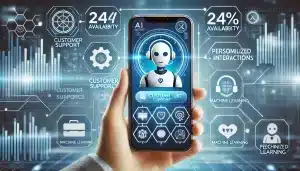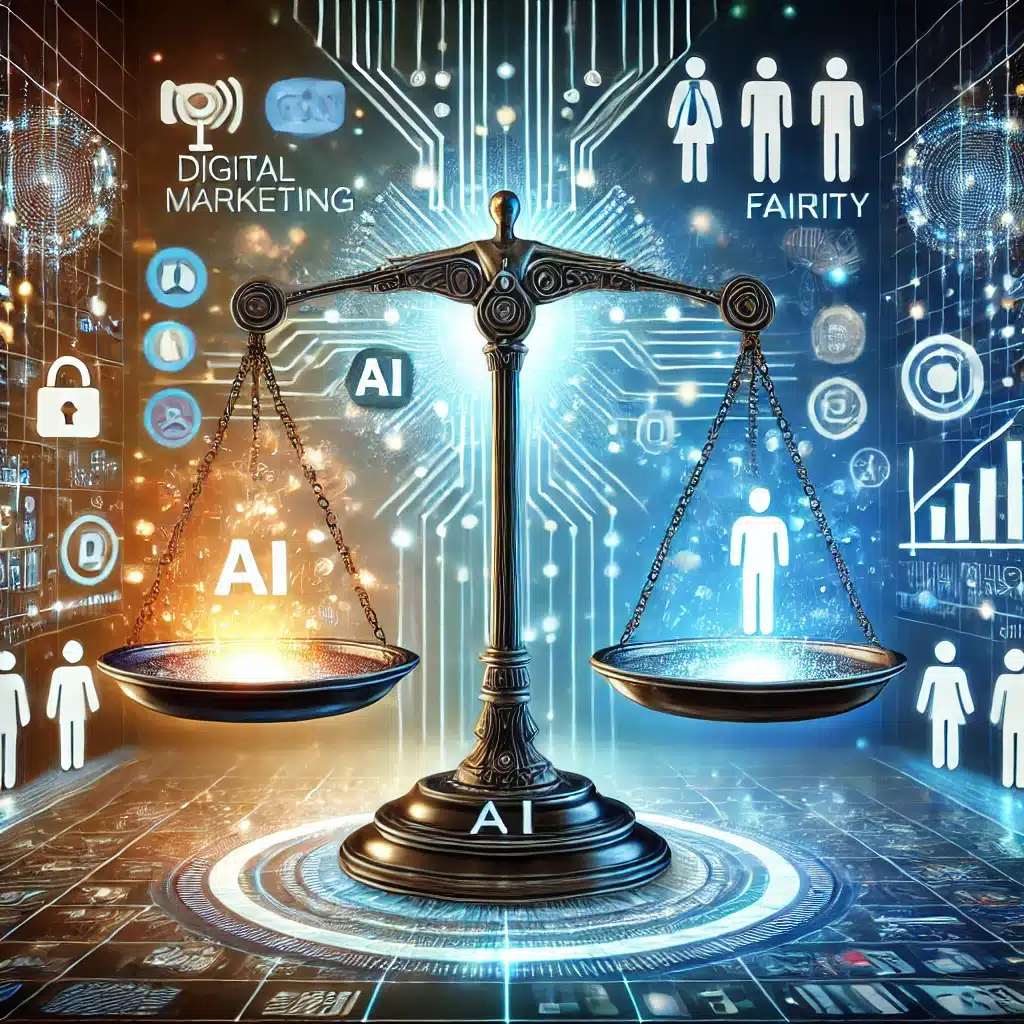In today’s digital era, customer expectations are higher than ever. They demand instant responses, accurate information, and personalized support experiences. To meet these growing demands, businesses are turning to AI-driven chatbots. These advanced tools are revolutionizing customer service by providing efficient, scalable, and always-on solutions for handling customer inquiries. It not only improves customer experiences but also help businesses optimize operations and reduce costs.
These advanced virtual assistants leverage technologies such as natural language processing (NLP) and machine learning to understand and respond to customer queries in real-time, providing seamless and human-like conversations. Unlike their scripted predecessors, AI-driven chatbots analyze the context and intent behind interactions, making them smarter and more effective with every use. As AI technology continues to advance, these chatbots are set to become even more indispensable, redefining the standards of customer support and giving businesses a competitive edge in a digital-first world.
How AI-Driven Chatbots Work
Benefits of AI-Driven Chatbots
It offers several transformative benefits:
1. 24/7 Availability
These chatbots work round the clock, ensuring customers receive immediate assistance at any time, regardless of time zones. Businesses can maintain a high level of customer satisfaction without the constraints of traditional working hours.
2. Simultaneous Handling of Multiple Queries
AI chatbots excel at managing multiple customer interactions simultaneously. This capability reduces wait times, eliminates long queues, and ensures efficient query resolution for all customers.
3. Personalized Customer Interactions
By analyzing customer data, such as previous interactions and purchase history, chatbots deliver tailored recommendations. This personalization enhances customer experiences and increases the likelihood of upselling or cross-selling.
4. Cost-Effective Operations
AI chatbots significantly reduce the need for large customer support teams. They handle repetitive and routine tasks, freeing up human agents to focus on complex issues that require empathy and critical thinking.
5. Improved Accuracy and Consistency
Unlike human agents who may vary in their responses, AI chatbots ensure uniform and error-free communication across all interaction
6. Data Collection and Insights
Every chatbot interaction generates valuable data. Businesses can analyze this data to gain insights into customer preferences, common pain points, and emerging trends, enabling them to refine their strategies.

Implementing AI-Driven Chatbots
Successfully integrating AI chatbots into your customer service strategy requires careful planning and execution.
1. System Integration
AI chatbots should be seamlessly integrated with existing customer support systems, such as CRM platforms and live chat software. This ensures a unified approach to customer interaction management.
2. Performance Monitoring and Updates
Regularly monitoring chatbot performance is crucial. Businesses should analyze key metrics, such as response times and resolution rates, to identify improvement areas. Periodic updates to the chatbot’s algorithms and knowledge base enhance its accuracy and functionality.
3. Balancing Automation with Human Interaction
While chatbots can handle a majority of queries, businesses must maintain a balance by escalating complex or sensitive issues to human agents. This hybrid approach ensures that customers receive empathetic and nuanced support when needed.
4. Customizing Chatbot Personalities:
Developing a chatbot with a consistent tone and style aligned with the brand identity helps in creating a positive impression and fostering customer trust.
Real-World Applications
AI-driven chatbots are transforming industries across the board:
1. E-Commerce
- Assisting customers with product searches, order tracking, and personalized recommendations.
- Driving sales through promotional offers and discounts shared during interactions.
2. Banking and Finance
- Providing real-time updates on account balances, transaction histories, and loan statuses.
- Enhancing security through two-factor authentication and fraud detection alerts.
3. Healthcare
- Scheduling appointments, sharing medical advice, and answering health-related FAQs.
- Offering mental health support through conversational AI chatbots.
4. Travel and Hospitality
- Assisting with booking tickets, managing itineraries, and recommending travel packages.
- Providing multilingual support for global travelers.
Overcoming Challenges:
While it offers numerous benefits, their successful implementation requires addressing several challenges to maximize their potential.
- Ensuring Seamless Integration with Existing Systems
- One of the primary challenges is integrating AI-driven chatbots with existing customer support systems, such as CRMs or helpdesk software. Seamless integration ensures that chatbots can access customer data, enabling personalized interactions and accurate query resolutions. Businesses must work with technology providers to ensure compatibility and smooth data flow between systems.
- Managing Customer Expectations
- Some customers may expect chatbots to handle every query perfectly, while others might prefer human interaction. Businesses should clearly communicate chatbot capabilities and provide options for escalation to human agents when needed. Balancing automation with human support ensures a positive customer experience.
- Maintaining Data Privacy and Security
- AI chatbots handle sensitive customer information, making data privacy a top priority. Implementing robust encryption, adhering to data protection regulations, and regularly auditing systems for vulnerabilities are essential steps to safeguard customer data and maintain trust.
- Continuous Learning and Updates
- Chatbots need ongoing training and updates to remain effective. Customer queries evolve, and businesses must ensure their chatbots adapt to new trends, language nuances, and customer preferences. Regular performance reviews and incorporating customer feedback into updates help improve chatbot accuracy and relevance.
By addressing these challenges, businesses can implement AI-driven chatbots effectively, ensuring they deliver value to both the company and its customers.
Future of AI-Driven Chatbots
As AI technology advances, the capabilities of chatbots will continue to grow:
- Voice-Powered Chatbots: Integration with voice recognition technology will enable conversational interfaces.
- Multilingual Capabilities: Chatbots will provide real-time translations, breaking language barriers in customer interactions.
- Predictive Assistance: AI will predict customer needs and proactively offer solutions.
- Integration with IoT: Chatbots will communicate with connected devices, expanding their utility in smart homes and workplaces.
These innovations will make chatbots even more indispensable for businesses striving to enhance customer experiences.
Conclusion
AI-driven chatbots are revolutionizing customer support, offering instant, personalized, and efficient service. Their ability to handle large volumes of inquiries, provide accurate responses, and operate 24/7 makes them a valuable asset for businesses aiming to meet modern customer expectations.
By implementing AI-driven chatbots strategically, businesses can not only reduce operational costs but also foster customer loyalty and satisfaction. As AI continues to evolve, the role of chatbots in customer service will become even more significant, empowering businesses to stay competitive in an increasingly digital world.
FAQs
1.What are AI-driven chatbots, and how do they work?
AI-driven chatbots are intelligent systems powered by advanced technologies, including natural language processing (NLP) and machine learning. Unlike traditional scripted bots, these chatbots can understand and respond to customer queries in real time by analyzing the context and intent behind each interaction. Additionally, they learn from previous conversations, which allows them to continuously improve their ability to provide accurate and personalized responses.
2. What are the main benefits of using AI-driven chatbots for customer support?
AI-driven chatbots offer several significant advantages that enhance customer support. Firstly, they provide 24/7 availability, ensuring that customers receive assistance at any time of the day. Secondly, their faster response times eliminate long wait periods, leading to improved customer satisfaction. Moreover, these chatbots can handle multiple queries simultaneously, which makes them highly efficient. By analyzing customer data, chatbots personalize interactions, offering tailored recommendations and resolving issues specific to individual needs. As a result, businesses can deliver superior customer experiences while streamlining operations.
3. Can AI-driven chatbots replace human customer support agents entirely?
While AI-driven chatbots excel at managing repetitive and straightforward inquiries, they cannot completely replace human agents. For instance, complex, sensitive, or emotionally charged issues often require human empathy and nuanced understanding, which AI lacks. However, rather than replacing human agents, chatbots complement their efforts by taking care of routine tasks and escalating more intricate cases to human representatives. This approach creates a balanced system where automation enhances efficiency while humans handle tasks requiring emotional intelligence.
4. How do AI chatbots ensure data privacy and security?
AI-driven chatbots are designed with robust security measures to safeguard customer data. For example, they use encryption protocols to secure data exchanges and implement secure authentication methods to prevent unauthorized access. Furthermore, these systems comply with data protection regulations like GDPR or CCPA, ensuring businesses adhere to global standards. In addition, regular security audits and updates strengthen the reliability of these chatbots, providing customers with confidence in their privacy.
5. What industries benefit the most from AI-driven chatbots?
AI-driven chatbots are highly versatile, offering value across a wide range of industries. In the e-commerce sector, they are used for personalized product recommendations, order tracking, and handling customer queries. Meanwhile, financial institutions rely on chatbots for managing account inquiries, providing fraud alerts, and onboarding new customers. In healthcare, chatbots assist with scheduling appointments, answering medical FAQs, and providing general health information. Additionally, in travel and hospitality, they manage booking queries, offer itinerary assistance, and provide 24/7 support for travelers. This versatility ensures that chatbots remain valuable across diverse business domains.
6. How can businesses measure the effectiveness of AI-driven chatbots?
Measuring the effectiveness of AI-driven chatbots involves tracking several key performance indicators (KPIs). Firstly, businesses should monitor response times to assess how quickly queries are resolved. Secondly, metrics like query resolution rates and customer satisfaction scores provide insights into the chatbot’s efficiency. Additionally, engagement rates and the percentage of inquiries resolved without human intervention highlight the chatbot’s overall impact. By continuously reviewing these metrics, businesses can optimize chatbot performance, ensuring it meets both organizational goals and customer expectations.



